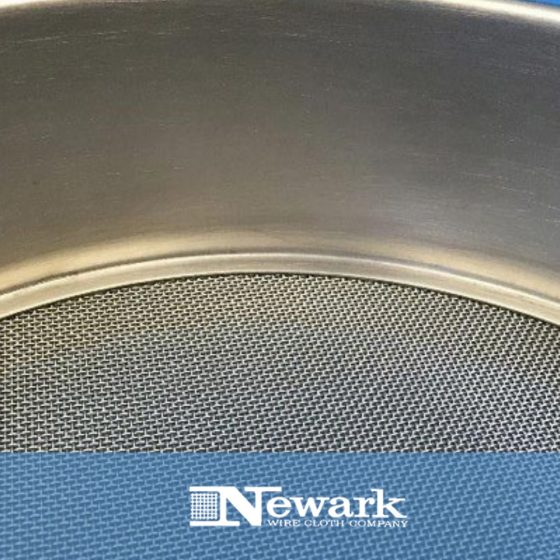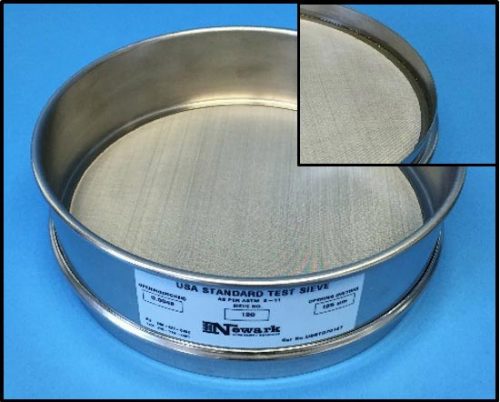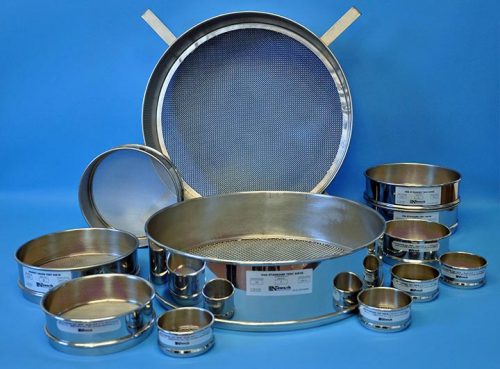Newark Wire News
Newark Wire News
Test Sieve Construction Methods Drive Quality Results

Test sieves are critical components in production. They ensure products are manufactured to exacting, precise standards. These standards, guided by an international evaluative organization, in turn, help shape the way test sieves are made.
Here’s a closer look at the precision needed for test sieve construction and how to make the right choice for your testing processes.
What Is a Test Sieve?
Test sieves are used in industries of many types to evaluate the uniformity of products. Woven metal wire cloth is stretched across a rigid, usually round metal frame. The openings’ size and shape are uniform, allowing test sieves to be used to evaluate the production process.
Test sieves can be stacked in a sieve shaker to agitate particles down differently sized sieves to test size outcomes. Some test sieves are built for primary use with dry particles while others accommodate a wet wash process.

What Types of Sieves Are Available?
Test sieves can be made to accommodate many different particle types, testing processes and industry standards. Stainless steel is a common production material, available in multiple 300-series steel grades. Historically, sieves have been constructed with all stainless steel components, all brass components or a brass frame with stainless steel wire cloth.
There are three standard test sieve construction modes:
1. Pure Tin Solder Method
These test sieves use pure tin-based solders to adhere the wire mesh to the underside of the sieve frame. Evidence of the solder is usually virtually absent from the interior surfaces.
They are most commonly used for food, beverage and pharmaceutical laboratory sieves and are FDA-compliant. They can be used for most wet and dry sieving processes. They are not recommended for use with acidic substances or caustic cleaning solutions as the tin solders will break down.
2. UV Adhesive Method
This method uses a state-of-the-art, proprietary polymeric adhesive that connects the wire cloth mesh to the frame, sealing the joints between the two. As with the tin solder method, the UV adhesive is practically absent from the frame surface, creating a secure connection of cloth to the frame.
UV adhesive test sieves are autoclavable and certified compliant with USP Biological Reactivity Tests in Vivo USP Plastics Class VI. While ideal for dry sieve testing, they are not advised for use with wet sieve processes or those in high-humidity processes as the UV seals can break down.
3. Welded Construction Method
A welded test sieve is constructed using continuous resistance spot welds to connect the mesh cloth to the frame. The spot welds overlap, ensuring that the particles go through the test sieve, not around it. No filler materials are used in the welding process. Often used in pharmaceutical testing applications, welded products can be used for wet and dry testing processes.

How Are Test Sieves Certified?
Why do test sieve construction methods matter? Because of certification. Most test sieves need to adhere to ASTM standards for test sieve sizes, construction and mesh standards. While other standards are also in play depending on the industry, ASTM and other certification agencies generally evaluate the following:
- — Construction rigidity
- — Woven mesh cloth that’s mounted to the frame free of distortion, waviness or looseness
- — Construction that traps particles or not
- — Ease of sliding bottom of one frame into the top of a similarly sized sieve
Where Can We Find Quality Test Sieves?
When looking for test sieves, remember:
- — Test sieves can be used to test particulate size in many industries
- — Test sieves can be constructed using pure tin solder, UV adhesive or welded construction method
- — Certification is critical and considers opening size, construction type and construction quality
At the Newark Wire Cloth, you can find brass and stainless steel test sieves of all sizes. Our SuperlaSieve technology features cleaner-by-design construction that delivers a superior product. To learn more, contact us today.
